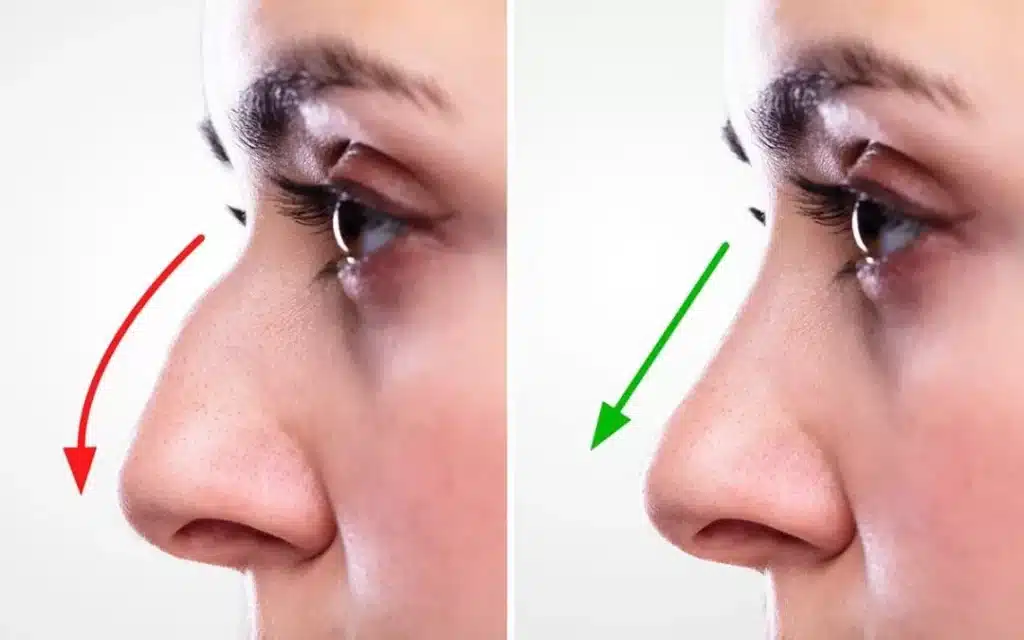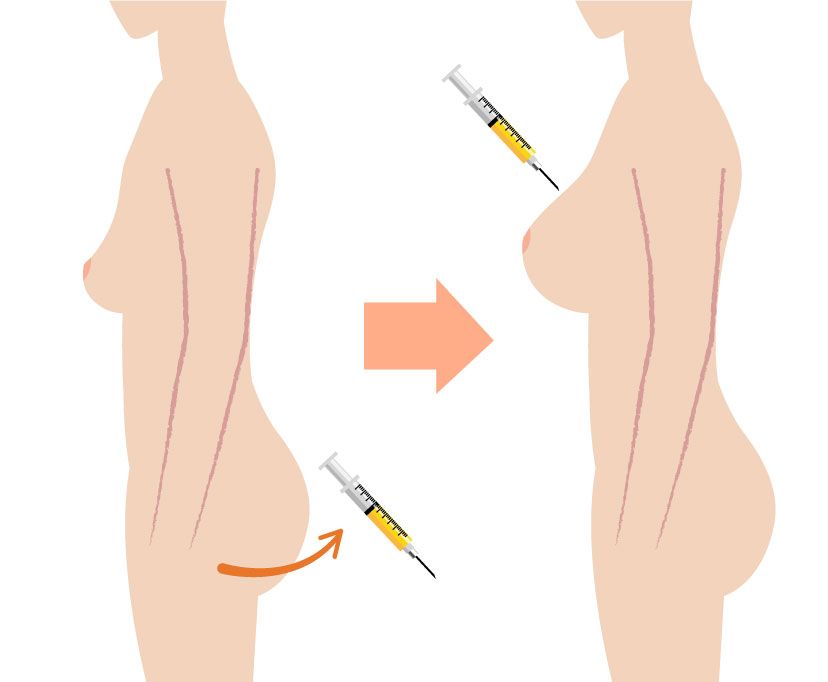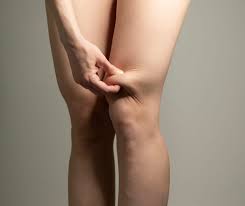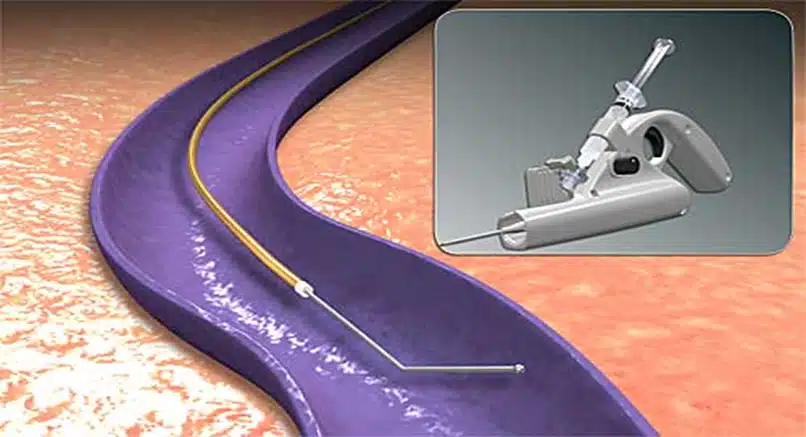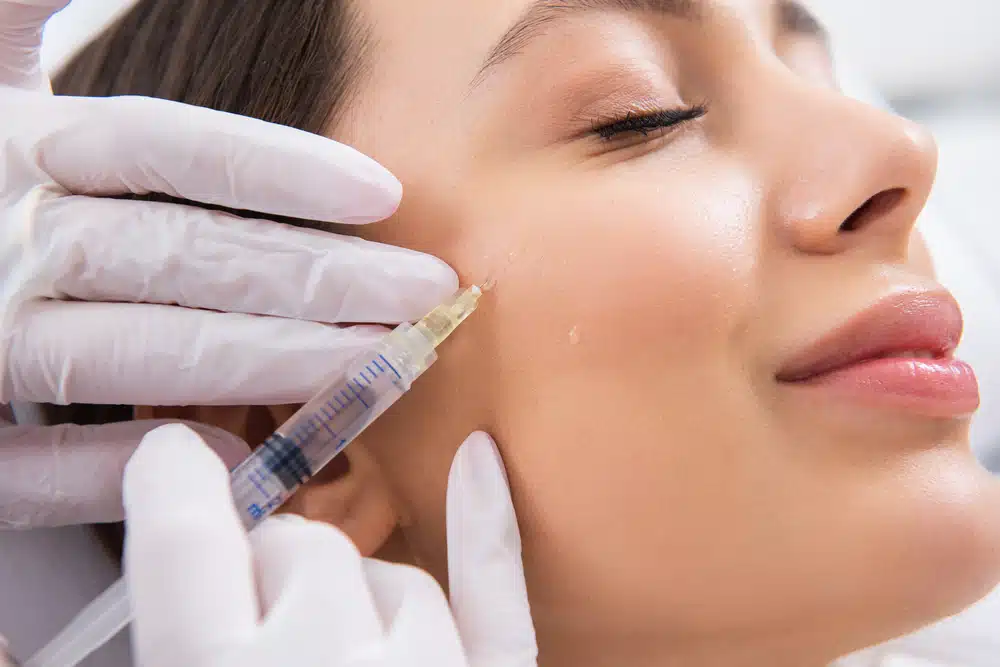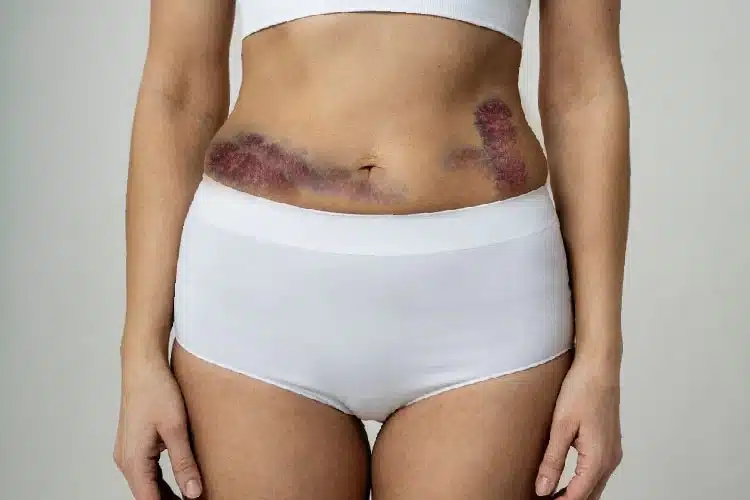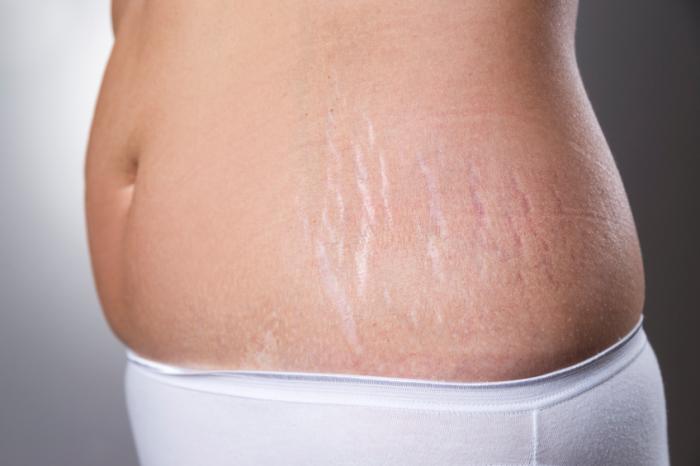Did you know that over 90% of Kybella users report satisfaction with their results, similar to neck liposuction and other cosmetic treatments for effective body rejuvenation and cosmetic rejuvenation? This popular injectable treatment targets stubborn fat under the chin, offering a sleek jawline that you need. Many potential clients wonder, ‘How long does Kybella last for neck fat?’ Understanding the longevity of Kybella after each treatment session is crucial for anyone who needs to consider this procedure.
Kybella can provide lasting effects, but individual results may vary. Factors like metabolism and skin elasticity play a role. Knowing what to expect helps you make informed decisions about your beauty journey. In this post, we’ll dive into how long Kybella lasts and what you can do to maximize its effects. Get ready to discover the ins and outs of this game-changing treatment.
What Is Kybella?
Kybella is an FDA-approved injectable treatment. It reduces submental fat, commonly known as a double chin. This treatment has gained popularity for its ability to contour the jawline without surgery.
The active ingredient in Kybella is synthetic deoxycholic acid. Deoxycholic acid is a substance that the body produces naturally. It helps break down and absorb dietary fat. When injected into the targeted area, it effectively destroys fat cells.
Kybella is designed specifically for reducing fat under the chin. The injections target stubborn fat that does not respond well to diet or exercise. Many people seek Kybella to achieve a more defined jawline and improve their profile.
Treatment Process
The treatment involves several steps. First, a consultation with a healthcare provider occurs. They assess whether Kybella is suitable for the individual.
Next, the provider prepares for the injection process. They may apply a topical anesthetic to minimize discomfort. The actual injection takes only a few minutes. Multiple injections may be required during each session.
Patients typically receive two to six treatments spaced about one month apart. Each session targets fat cells directly under the chin.
How It Works
Once injected, Kybella begins to work immediately. The synthetic deoxycholic acid disrupts the cell membranes of fat cells. As these cells break down, they release their contents into the body.
Over time, the body metabolizes these destroyed fat cells. This process leads to a noticeable reduction in submental fullness. Most patients see results within two to four months after their final treatment.
Results and Longevity
The results from Kybella are long-lasting. Once the fat cells are destroyed, they do not return. Patients can maintain their results by following a healthy lifestyle.
However, weight gain can affect overall appearance. If significant weight is gained, new fat cells may develop in the treated area.
Side Effects
Like any medical procedure, Kybella has potential side effects. Common side effects include swelling, bruising, and pain at the injection site. These usually resolve within a few days.
Serious side effects are rare but can occur. Patients should discuss risks with their healthcare provider before starting treatment.
How Kybella Works
Active Ingredient
Kybella contains deoxycholic acid as its active ingredient. This substance is naturally found in the body. It helps break down and absorb dietary fat. When injected into specific areas, it targets unwanted fat deposits.
Fat Cell Destruction
The injected deoxycholic acid works by destroying fat cells. Once the acid enters the targeted area, it disrupts the cell membranes of fat cells. This process prevents these cells from storing or accumulating fat again. As a result, patients notice a reduction in the appearance of submental fullness, often referred to as a double chin.
Body’s Elimination Process
After Kybella destroys fat cells, the body takes over. It gradually eliminates these dead cells through natural metabolic processes. This means that results do not appear immediately but develop over time. Most people notice improvements within weeks after treatment. Typically, full results can be seen around six weeks post-injection.
Treatment Sessions
Multiple treatment sessions may be necessary for optimal results. Most patients require two to four sessions spaced at least one month apart. During each session, a healthcare professional injects Kybella into the targeted area. The exact number of sessions depends on individual goals and the amount of fat present.
Side Effects
e side effects are common after Kybella injections. Patients may experience swelling, bruising, or pain at the injection site. These effects usually subside within a few days. Serious side effects are rare but can occur. Always consult with a qualified healthcare provider before undergoing treatment to discuss potential risks.
Long-Term Results
Kybella provides long-lasting results once fat cells are destroyed. The body does not regenerate these cells in treated areas. Therefore, patients can enjoy a more defined jawline without needing ongoing treatments. Maintaining a healthy lifestyle can further enhance and prolong results.
Duration of Kybella Results
Lasting Effects
Kybella results are expected to last a lifetime. This is because the treatment destroys fat cells in the targeted area. Once these fat cells are eliminated, they do not return. The body does not create new fat cells in the treated area after the age of 25. This means that if the treatment is done correctly, patients can enjoy a more sculpted appearance for years.
Weight Considerations
Results can diminish with significant weight gain after treatment. If a person gains weight, existing fat cells in untreated areas may expand. This can alter the overall appearance and may make the treated area less defined. Maintaining a stable weight is crucial for preserving Kybella results.
Patient Experience
Many patients report satisfaction with their Kybella results. They appreciate how the treatment enhances their facial contours. Some notice changes within weeks after their sessions. Complete results may take up to six months to develop fully. Patients often feel more confident as they see their desired outcomes.
Follow-Up Treatments
e individuals may require follow-up treatments for optimal results. After initial sessions, patients should consult with their healthcare provider. This helps determine if additional Kybella injections are necessary. Each case is unique, so personalized assessments are essential.
Lifestyle Impact
Lifestyle choices also play a role in maintaining results. A balanced diet and regular exercise support long-term success. Staying active helps manage weight and improves overall health. Many find that making healthier choices contributes positively to their appearance.
Long-Term Outlook
Research shows that Kybella can lead to lasting improvements in submental fullness. Studies indicate that most patients maintain their results over time. However, individual experiences may vary based on factors like metabolism and lifestyle habits.
Final Thoughts
Kybella offers a reliable solution for those seeking to reduce submental fat. The destruction of fat cells leads to long-lasting results, provided that weight remains stable post-treatment. Patients should prioritize healthy habits to maximize and maintain their outcomes.
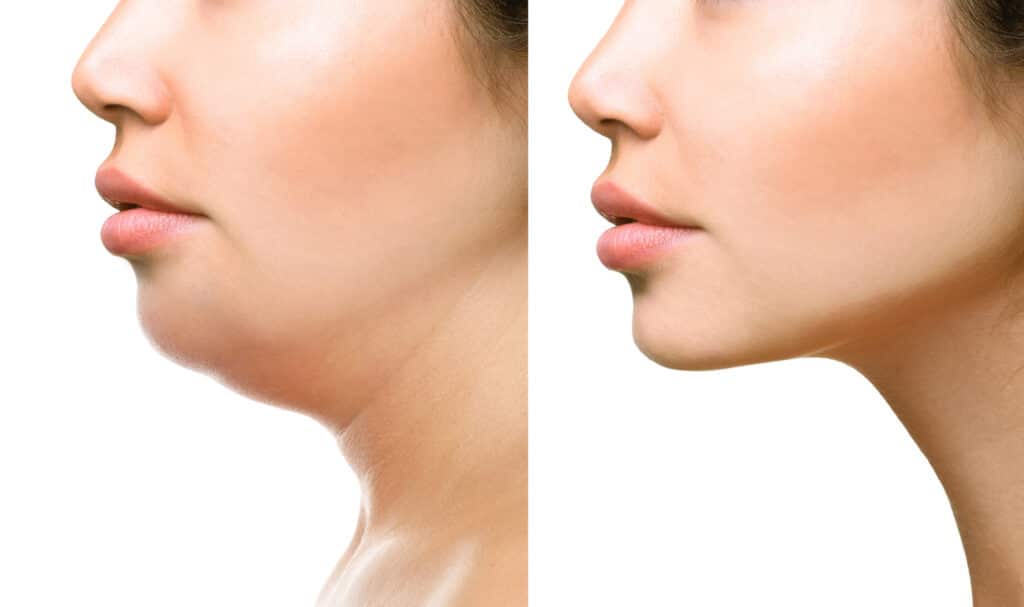
Factors Influencing Longevity
Age
Age plays a role in how long Kybella results last. As people age, their skin loses elasticity. This can affect the appearance of the neck and chin area. Older individuals may notice changes in fat distribution more than younger ones. The body’s ability to maintain fat reduction also declines with age.
Younger patients often experience longer-lasting results. Their skin tends to be firmer and more resilient. This can help keep the treated area looking good for an extended period.
Weight Management
Maintaining a stable weight is crucial after receiving Kybella treatments. Gaining weight can lead to fat accumulation in the treated areas. Studies show that even a modest weight gain of 10 pounds can impact results. Those who manage their weight effectively tend to enjoy longer-lasting effects from Kybella.
Regular exercise and a balanced diet support weight management. Keeping your body healthy helps maintain your Kybella results.
Fat Reduction
Kybella works by destroying fat cells under the chin. Once these cells are eliminated, they do not return. However, new fat cells can develop if lifestyle choices change. Poor diet or lack of exercise may lead to excess fat accumulation over time.
Understanding how Kybella reduces fat is important. It targets specific areas, making it effective for localized fat reduction. Patients should focus on maintaining their results through healthy habits.
Skin Tightness
Skin tightness can influence how long Kybella results last. Over time, skin may become looser due to aging or weight changes. To combat this, periodic Ultherapy sessions can be beneficial. Ultherapy uses ultrasound technology to tighten skin.
These sessions can enhance the overall appearance of the neck area after Kybella treatment. Regular Ultherapy may help prolong the effects of Kybella by keeping the skin firm.
Alcohol Consumption
Alcohol consumption can also affect Kybella results. Drinking alcohol in excess can lead to weight gain and fat distribution changes. Moderation is key if you want to keep your neck area looking its best.
Limiting alcohol intake supports both weight management and skin health. This approach helps maintain the desired effects of Kybella.
Permanent or Temporary?
Kybella Results
Kybella provides permanent results by destroying fat cells in the submental region. Each injection targets and eliminates these unwanted fat cells. Once destroyed, they do not return. This means that the reduction in submental fullness is lasting.
Weight Gain Impact
While Kybella removes fat cells, it’s important to understand that remaining fat cells can still expand. If a person experiences rapid weight gain, the existing fat cells may enlarge. This can lead to the return of excess fat under the chin. Therefore, maintaining a stable weight is crucial for preserving results.
Lifestyle Choices
A healthy lifestyle supports long-lasting outcomes from Kybella treatments. Regular exercise and a balanced diet help prevent weight gain. These choices minimize the risk of expanding remaining fat cells. Many people find that staying active and eating well enhances their overall appearance.
Treatment Frequency
Kybella injections usually require multiple sessions for optimal results. Most patients need two to six treatments spaced at least one month apart. Each session progressively reduces submental fullness. The exact number of injections varies based on individual goals and the amount of unwanted fat.
Aftercare Considerations
Post-treatment care also plays a role in achieving lasting results. Patients might experience swelling, bruising, or discomfort after injections. Following the provider’s instructions for aftercare can aid recovery. Proper care helps maintain good skin health, which is essential for visible results.
Consultation Importance
Consulting with a qualified professional before starting Kybella is vital. A trained expert can evaluate different chin profiles and recommend an appropriate treatment plan. They will assess factors like skin type and overall health to ensure safety and effectiveness.
Long-Term Perspective
Patients should take a long-term perspective when considering Kybella. The goal is not just immediate improvement but lasting change. Understanding how lifestyle affects results empowers individuals to make informed choices.
Extending Kybella Results
Healthy Lifestyle
Maintaining cosmetic results from Kybella requires commitment. A balanced diet plays a crucial role. Eating a variety of fruits, vegetables, and lean proteins can help. Regular exercise also supports your efforts. Aim for at least 150 minutes of moderate aerobic activity each week. This combination helps keep the body in shape and prevents excess chin fat from returning.
Weight management is essential for lasting effects. Avoiding significant weight fluctuations can be beneficial. If you gain weight, remaining fat cells may expand. This could lead to the return of submental fat under the chin. Keeping a stable weight helps maintain your improved chin profile.
Additional Treatments
Consider complementary treatments to enhance results. Ultherapy is one option that many find effective. It uses ultrasound technology to tighten skin. This can improve skin firmness after Kybella injections. Combining treatments may provide a more comprehensive approach to facial rejuvenation.
Other cosmetic injections can also be part of your plan. These may target different areas of concern on the face. They can help create a more youthful appearance overall. Consulting with a qualified professional is important before starting any new treatment.
Follow-Up Sessions
Follow-up sessions may be necessary for optimal results. Some individuals benefit from additional Kybella treatments over time. Each session targets the fat cells in the area beneath the chin. Discuss your goals with your provider to determine the best schedule.
Understanding how Kybella works is key to maximizing its effects. The treatment destroys fat cells permanently, but lifestyle choices matter too. Staying proactive about your health can extend the benefits of fat removal results.
Realistic Expectations
Setting realistic expectations is vital when considering Kybella. Results vary among individuals based on several factors. Age, genetics, and skin elasticity can influence outcomes. Understanding these factors helps manage expectations about what Kybella can achieve.
Discussing your concerns with a healthcare professional is essential before treatment. They can provide insights tailored to your situation and guide you through the process.
Treatment Session Duration
Typical Duration
A typical Kybella session lasts between 15 to 20 minutes. This timeframe allows for proper administration of the treatment. Most patients find this duration manageable and convenient.
Factors Influencing Time
The actual duration may vary based on several factors. The amount of fat in the targeted area plays a significant role. If a patient has more fat to treat, the session may take longer. Moreover, specific areas being treated can affect the time needed for each session.
Multiple Sessions Required
Patients often need multiple sessions for optimal results. Kybella is not a one-time treatment. It works best when spaced out over several weeks. Most individuals require about two to four sessions, depending on their unique goals.
Candidate Eligibility
Good Candidate
Healthy adults with concerns about submental fullness are the best candidates for Kybella. Many individuals seek treatment to improve the appearance of a double chin or excess neck fat. These conditions can affect self-esteem and overall confidence.
Kybella works effectively on those who have moderate to severe submental fullness. This condition can be caused by genetics, aging, or even posture issues. Candidates should not have any underlying health problems that could complicate the procedure. A consultation with a healthcare provider is essential to determine eligibility.
Poor Candidate
Certain individuals may not be suitable for Kybella. Those with infections in the treatment area should avoid the procedure. People who have difficulty swallowing or bleeding disorders also fall into this category.
Pregnant or breastfeeding women should refrain from using Kybella until they are no longer in these conditions. Individuals with a history of allergies to deoxycholic acid, the active ingredient in Kybella, must also consider alternative treatments.
Appointment
The initial appointment is crucial for assessing candidate eligibility. During this visit, a healthcare provider evaluates the patient’s medical history and physical condition. They will discuss specific concerns related to submental fullness and desired outcomes.
Candidates should prepare to share their goals and expectations during this meeting. This open conversation helps establish a clear understanding between the patient and provider. It also sets realistic expectations regarding results.
Results
Kybella’s effectiveness often leads to noticeable results within weeks after treatment. Patients typically see improvements in their chin area as fat cells break down over time. The body gradually flushes out these destroyed cells, leading to a more defined jawline.
Most candidates require multiple treatment sessions to achieve optimal results. The number of appointments varies based on individual needs and goals. A healthcare provider will recommend the appropriate number of sessions during the initial consultation.
Contact
After determining eligibility, candidates can schedule their Kybella appointments at an office specializing in cosmetic procedures. It’s essential for candidates to follow all pre-appointment instructions provided by their healthcare team.
Maintaining communication with the healthcare provider before and after treatment is vital. This ensures that any concerns about the procedure or recovery are addressed promptly.
Pre-Treatment Steps
Medication Preparation
Discontinuing anticoagulants or blood-thinning medications is crucial before treatment. These medications can increase the risk of bleeding. Patients should stop taking them at least a week prior to their appointment. This helps ensure a safer procedure.
Consulting with a healthcare provider about current medications is important. Some drugs may affect how Kybella works. Discussing these details can lead to better treatment outcomes.
Lifestyle Changes
Avoiding alcohol and smoking is advisable before the treatment. Alcohol can thin the blood, leading to increased bruising. Smoking affects healing and may prolong recovery time. Staying away from these substances for at least 48 hours before the procedure is best.
Healthy lifestyle choices can also enhance results. Eating a balanced diet and staying hydrated supports skin health. This preparation contributes to a smoother recovery process.
Medical Consultation
Meeting with a healthcare provider is an effective step in the preparation process. Discuss any existing medical conditions that could impact treatment. Conditions like allergies or autoimmune disorders may require special consideration.
Providers will review your medical history thoroughly. They will assess how it relates to the fat removal treatment. Open communication leads to tailored care that addresses individual needs.
Treatment Expectations
Understanding what to expect during the cosmetic treatment is essential. Patients should know that Kybella involves multiple injections in the targeted area. The procedure usually takes about 15 to 20 minutes, depending on the amount treated.
Discussing potential side effects with your provider is key. Common reactions include swelling, bruising, and discomfort at injection sites. Knowing these details prepares patients for post-treatment experiences.
Post-Care Guidance
Following treatment, specific aftercare steps help improve outcomes. Keeping the treated area clean reduces infection risks. Applying ice packs can minimize swelling and discomfort.
Staying active but avoiding strenuous exercise for a few days is wise. This allows the body to heal properly without added strain.
Closing Thoughts
Understanding how long Kybella lasts is crucial for anyone considering this treatment. You’ve learned about its effectiveness, factors that influence results, and ways to extend your outcomes. The longevity of Kybella can vary, but with the right approach, you can enjoy lasting results.
If you’re ready to enhance your aesthetic journey, consult with a qualified professional. They can guide you through the process and help you achieve the best results tailored to your needs. Don’t wait—take the first step toward a more confident you today!
Frequently Asked Questions
How long does Kybella last?
Kybella results can last for several years, typically around 2 to 4 years. However, individual results may vary based on lifestyle and body composition.
Is Kybella treatment permanent?
While Kybella effectively reduces fat cells, it does not prevent new fat from accumulating. Maintaining a healthy lifestyle is essential for long-lasting results.
How many Kybella sessions are needed?
Most patients require 2 to 4 sessions spaced about a month apart to achieve optimal results. Your provider will tailor the plan based on your goals.
What factors affect Kybella longevity?
Factors include individual metabolism, diet, exercise habits, and age. These elements can influence how long the results last.
Can I extend my Kybella results?
Yes, you can extend your results by maintaining a balanced diet and regular exercise. Staying hydrated also helps support skin elasticity.
Who is an ideal candidate for Kybella?
Ideal candidates are adults with moderate to severe submental fullness (double chin) who are not significantly overweight and have realistic expectations.
What should I do before my Kybella treatment?
Before treatment, avoid blood thinners and certain medications as advised by your provider. Discuss any medical conditions or allergies during your consultation.

